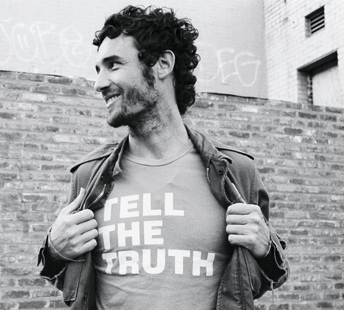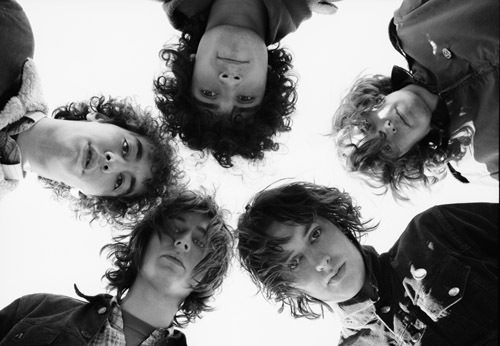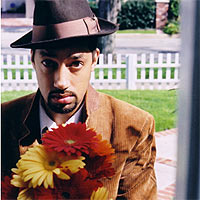The Bang Years 1966-1968 is my fave of the year so far, easy, and
PopMatters allowed me to award it their coveted "Ten Stars Out of Ten" rating, an honor earned in the past only by the likes of, um, Kanye West I think. Probably others. But, you know, they try to talk you down. I'll reprint the whole thing here because I don't think they mind, and because this review fills me with such discourteous joy.
He got the western movement!
If Neil Diamond is the Jewish Elvis, then Bang was his Sun Records. Bang was a small New York City label, distributed by Atlantic and operated by “Twist and Shout” songwriter Bert Berns. When Berns signed Diamond in 1966, Bang Records was best known for the McCoys’ “Hang on Sloopy”, another Berns composition. Like his boss, Diamond had graduated from New York’s Brill Building, a sort of Harvard for staff songwriters; unlike Berns, Diamond didn’t graduate with honors. As he puts it kindly in the liner notes of his new compilation
The Bang Years 1966-1968, Diamond’s early non-hits were “silly songs about made up people”. By 1966, Diamond was frustrated and out of work, with a baby on the way. Bang was where he pulled it together and found a voice that was completely new.
As with most completely new voices, Diamond pillaged what other people had already done. Specifically, Diamond’s music combined the introspection of Greenwich Village singer-songwriter folk, the tightly wound beats and arrangements of Brill Building pop, and the brooding, leather-clad urban cowboy sensibility of a thousand solitary men toiling away in garage bands. This music was post-Beatles and post-Dylan (another compelling candidate for Jewish Elvis), but it was an utterly contemporary urban pop sound, with a scraggy rock edge in Diamond’s voice. Had Diamond undergone electroshock therapy and become friends with John Cale, he might have started the Velvet Underground.
That’s a big “if”, but listen to “Someday Baby” and see if you don’t hear more than a little Velvets in its droning, cavernous groove. “Someday” is a deep cut from Diamond’s debut album,
The Feel of Neil Diamond, heretofore unavailable on CD except as part of sketchy bootlegs or a short-lived stereo compilation.
Feel only reached #137 on
Billboard’s album chart, but it’s terrific from top to bottom. It showcases Diamond the rhythm fiend, the backbeat scientist, the Dr. John of NYC guitar-slingers.
Feel’s songs are practically a taxonomy of different backbeats. Besides the druggy Factory vibe of “Someday”, there are the boogaloo touches of “Cherry, Cherry”, the horn stabs of “Solitary Man”, the slowed-down bubblegum of “Do It”, and the morose tambourine folk of “I’ve Got the Feeling (Oh No No)”. Diamond’s covers catalog his influences: “Red Rubber Ball”, “La Bamba”, “New Orleans”, “Monday Monday”, and “Hanky Panky”. Each is seemingly chosen for its locomotive energy, each manifests that energy with a distinct rhythm.
These rhythms are played straight, rarely swung, and they subsume all other musical elements. The trombone chorus, honking one-note bari sax, and omnipresent bottom half of the piano don’t play melodies so much as extensions of the grooves. Even Diamond’s melodies are rhythmic marvels. Go ahead, sing the stunning line that opens this album (you know you want to): “Melinda was miiiine ‘til the tiiiime that I found her.” Notice how it starts and ends with syncopated figures, and how they contrast and highlight the longer notes in the middle. Diamond’s biographer Laura Jackson describes those early recording sessions:
“He didn’t merely sing the song. To the surprise of those in the control room, he performed it, and in such a way that the strong sense of rhythm running through him was channeled visibly in the way his body and his acoustic guitar would sway in perfect harmony with each other. [Engineer] Brooks Arthur called it ‘a kinetic thing happening’...”
—from Neil Diamond: His Life, His Music, His Passion
If Diamond wrote and performed with innate beat savvy, his arranger Artie Butler and producers Jeff Barry and Ellie Greenwich made those beats explicit. Barry and Greenwich had discovered Diamond, and the authors of “Hanky Panky” knew how to bring songs to life. That’s them singing backup and clapping throughout these songs; their vocal arrangement on “Cherry, Cherry” is one of humanity’s proudest achievements.
The Bang Years also includes Diamond’s second album
Just For You—as poorly represented on CD as
Feel—and the single “Kentucky Woman” b/w “The Time Is Now”. All this stuff is uniformly great.
Just For You boasts the hits “Girl, You’ll Be a Woman Soon”, “Thank the Lord for the Night Time”, and the eternal classic “You Got to Me”. It features songs that were bigger hits for other artists: “I’m a Believer”, “Red, Red Wine”, and the eternal classic “The Boat That I Row”. It’s got “The Long Way Home”, a majestic song that barrels like a subway train. And the whole comp ends with “Shilo”, the first big Neil Diamond power ballad—it trades Ellie Greenwich and her handclaps for strings and actual drum fills. A harbinger of adult contemporary schlock to come, but a great bittersweet song nonetheless.
Two caveats: this package omits two of Diamond’s unofficial Bang songs, “Shot Down” and “Crooked Street”, and the mono remastering sounds a little loud through headphones. No matter. Overall, it’s a steering-wheel-pounding treat. For decades it’s been hard to find all these songs in the same place, especially in the sonic glory of their hard-hitting mono recordings. Because half these songs are already widely available elsewhere, this collection has slightly less archival impact than the Gentile Elvis’s
Sun Sessions or last year’s widely-circulated
Never Mind the Bullets, Here’s Early Bob Seger. Musically, though, it’s in their league.










